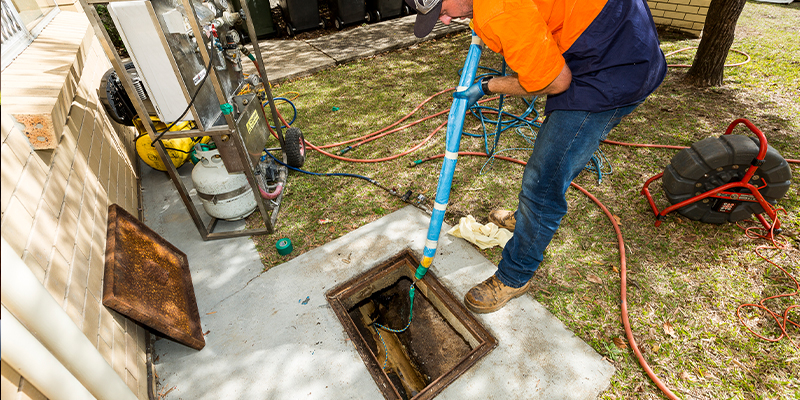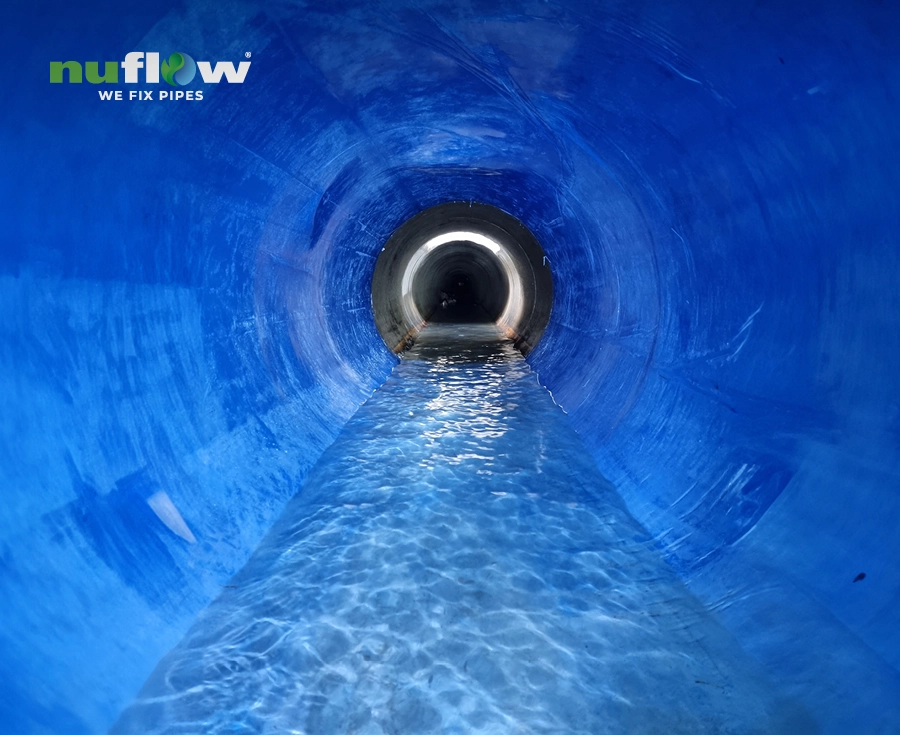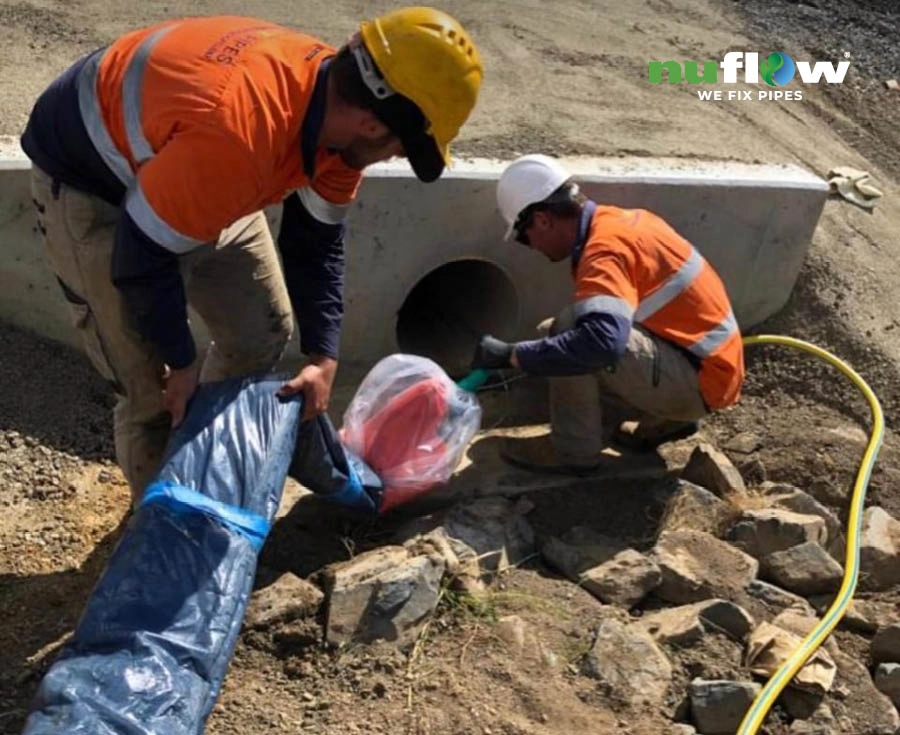For many people, trenchless pipe repair technology has meant the difference between a manageable and affordable property repair and a costly, invasive disruption to normal operations and lifestyle.
But there are also many in the community who are unclear about how trenchless technology works, and about how they can benefit from it.
This article will explain trenchless technology and give some examples of the different trenchless pipe repair strategies available on the market today. It will also discuss the many benefits of trenchless rehabilitation and repair of broken or collapsed pipes.
Trenchless pipe repair technology
Quite simply, trenchless technology means any technology utilised to carry out installation or repair of underground (sub-surface) utilities (pipes, cables etc.) without the need to dig an open trench. Open trenches usually:
- require significant human labour or medium-heavy machinery
- create workplace health and safety issues (collapse, people/children falling into trenches etc.)
- are highly destructive for the immediate environment
- mean anything above the surface (structures, paths, gardens etc.) needs to be destroyed (demolished) and then reinstated.
And all this means disruptive works, unnecessary damage to surrounding areas and significant additional cost.
Many plumbers in the mid to late 1900s saw a perfect storm on the horizon. Extensive networks of pipes were being laid around the world to service growing populations. At the same time, increasingly dense urban settlements were being built above and around those pipes. It was clear that eventually, when those pipes needed repair or replacement, traditional plumbing methods were not going to cope.
As a result, efforts were made to develop new technologies that would enable cities to keep going, even when pipes failed. Over the past 30 years those developments have mainly focused on trenchless methods of pipe repair, where pipes can be repaired without the need to dig anything.
Seems like magic? Many agree but it’s a magic formula backed by science that’s proven itself to be a winner, time and time again.
The growing trenchless pipe repair industry
According to Engineers Australia, trenchless pipe repair is a fast-growing industry which offers techniques for restoring urban infrastructure with minimal excavation. The trenchless rehabilitation industry has recorded year-on year growth every year for the past decade.
So when residential or commercial premises experience trouble with their sewer or drainage systems, the first consideration needs to be whether the location of the trouble will mean that a trenchless pipe repair will work better than an excavation.
When the industry was still in its infancy, some rogue operators promised the world and delivered very little. There were issues with liners not adhering to pipes correctly, flaking and weaknesses in the reline. But with those cowboys now long gone, there are professional companies operating today with solid reputations, leading edge training and education programs, and local Australian headquarters which offer extensive warranties and excellent product outcomes.
Trenchless pipe repair options
The trenchless pipe repair options most commonly used for plumbing projects are:
- Relining. This is where a damaged pipe is repaired by relining it from the inside. A new, stronger pipe is created within (or inserted into) a damaged one right where it sits in the ground – without any need to dig. Various relining strategies are available (below) with CIPP relining being the most common.
- Pipe bursting. This basically involves shattering the old, damaged pipe and leaving the remnants in situ. Then an entirely new pipe is inserted into the cavity the shattered pipe left behind.
- Pipe ramming. With pipe ramming, a new pipe is basically rammed into the earth beside or near a damaged pipe. The old pipe is disconnected and the new pipe takes over service delivery.
When it comes to pipe relining there are four distinct repair strategies.
They are:
- Cured-in-place (CIPP) relining where synthetic liners are impregnated with composite resin compounds and inserted into the damaged pipe
- Slip lining where a new, smaller pipe is ‘slipped’ inside the old damaged one
- Fold and form relining where a liner is folded down, inserted into a pipe and then heat is used to re-form it to adhere to the interior of the old pipe’s wall
- Spiral wound lining where long continuous lengths of pipe are mechanically wound into place (usually for long lengths of municipal pipeline).
CIPP relining is by far the most common method used in plumbing situations in Australia and again, there are a few choices to make about which method of installation will work best for each particular situation. The two most common are:
- The Pull-in-place method (using ropes to pull a custom liner into place to sit exactly where the damaged sections of pipe are situated)
- The Inversion method (for long, continuous lengths of pipe without bends, joins, transitions in diameter and junctions).
Most residential and smaller commercial plumbing repair projects will be best suited to the CIPP pull-in-place method of relining because of its flexibility, lower footprint, lower cost and fast, easy execution.
For more detail about the different trenchless options available, the advantages and disadvantages of each strategy and which one might be best for you, see our detailed explanation here.
The benefits of trenchless pipe repair
When toilets are blocked or kitchen drains are refusing to clear, the thought of being unable to use these vital services whilst they’re repaired can often be just as daunting as concerns over how much those repairs will cost.
Whilst the materials cost for most relining work is higher than materials in a pipe replacement (excavation), labour costs are significantly lower than traditional dig and replace methods. The other big benefit is that there are no hidden costs with trenchless pipe repair for things like concrete cutting, removal of flooring or tiles, destruction of walls or gardens, reinstatement of everything once the job is finished or unexpected costs that can arise as a result of excavating earth.
On top of those cost savings, there are the advantages of things like:
- little down time (with most jobs being completed in a day)
- minimal disruption to business activities, operations or services
- protection of customer relations and business income
- the longevity of the repair (usually coming with up to 50 years’ warranty)
- the strength of the repair (CIPP pull in place relining is a structural repair and can be tailored to suit all situations, including bridges, culverts, manholes and under train lines)
- the joint-less technology meaning much less chance of invasion from tree roots and future breakdowns
- no destabilisation of nearby infrastructure
- reduced risk of damage to other nearby services (like electricity, telecommunications cables, etc.)
- there are fewer WHS issues (no road closures, traffic management, excavation, demolition, or infrastructure repair or restoration)
- there is reduced risk to customers and the public
- there are no chemical residue/hazardous materials involved
- there are no risks associated with heavy machinery
- customers usually report they have improved flow rates and pressure in their pipes (due to the improved surface condition of the pipes)
- reduced impact upon sensitive natural species (insects, flora, fauna)
- reduced noise and air pollution
- fewer carbon emissions generated by relining materials and processes
TRENCHLESS PIPE REPAIRS: THE WAY OF THE FUTURE
As technology continues to evolve and the trenchless pipe repair industry grows, it is clear the methods of bygone days will become less and less attractive, particularly with younger homeowners who are more receptive to new technologies.
Nuflow is a fully Australian owned company with their own research, development and manufacturing facilities in Queensland. This means you can deal with the one company for all aspects of your reline project.
For more information about the benefits of dealing with a local, reputable and reliable relining company which guarantees their work for up to 50 years, contact them at nuflow.net




